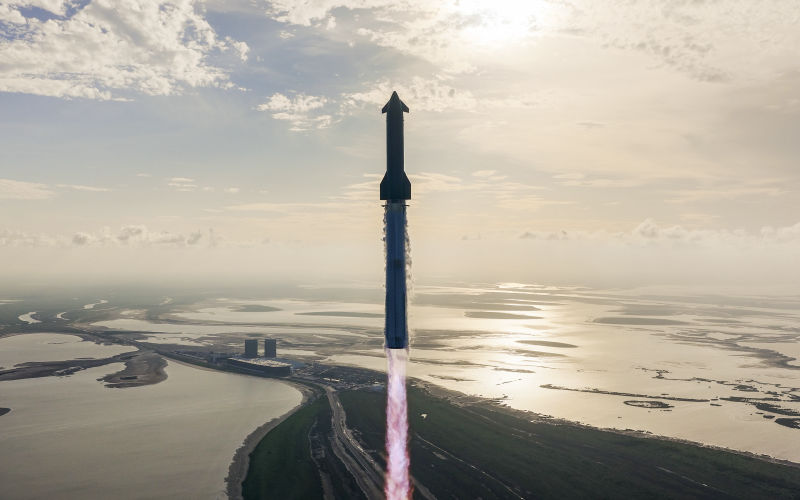SpaceX’s Starship completes first successful test after previous launch failures

The launch was closely watched after three earlier missions ended in failure, including one in June when a rocket exploded on the pad.
Elon Musk's SpaceX has managed its first successful flight of the newest version of its Starship rocket, after several failed attempts earlier this year.
The rocket, the largest and most powerful ever built, took off from the company's launch site in Boca Chica, Texas, at 18:30 local time (23:30 GMT) on Tuesday.
The test lasted just over an hour, making it the longest flight yet for the spacecraft.
More To Read
- Jim Lovell, Apollo 13 commander who saved crew, dies at 97
- Elon Musk’s xAI to launch text-to-video feature for Grok chatbot in October 2025
- X officially bans hashtags in all promoted posts
- SpaceX rocket explodes into a massive fireball during test
- Elon Musk unveils 'secure' XChat to rival WhatsApp
- Musk unveils Tesla robots performing household chores in viral demo
The launch was closely watched after three earlier missions ended in failure, including one in June when a rocket exploded on the pad.
However, during Tuesday's flight, the rocket's booster performed as expected, with all 33 engines igniting successfully. Roughly seven minutes after lift off, the booster detached from the spacecraft and dropped into the Gulf of Mexico as the Starship rocket pushed onward into space.
The rocket reached a peak altitude of nearly 200 kilometres before beginning its descent. During the return, flames burned parts of the control flaps, but the craft stayed on course and made it back to Earth, damaged but in one piece.
SpaceX chief Musk praised the result in a short post on X. "Great work by the SpaceX team!!" he said.
The flight is seen as a turning point for SpaceX, which had been under pressure after repeated setbacks, with previous rocket explosions even sending debris across the Bahamas, with some landing in the Turks and Caicos Islands in the Caribbean.
The first version of Starship flew five successful missions, but the upgraded design had yet to complete a single one until now.
Starship is central to SpaceX's long-term goal of building a fully reusable system that can carry heavy cargo and people to the moon and Mars.
The rocket is also tied to NASA's Artemis program, which plans to use a modified Starship to land astronauts on the moon in 2027.
Top Stories Today
Reader Comments
Trending











































